Work Samples
Custom Presentation Builder: Modularity, refactor, and SCSS @use Rule Migration
Stack:
Build:
Gulp.js with Node.js
Frontend:
Pug templates, Sass/SCSS, JavaScript (jQuery, GSAP, Sortable.js)
Testing / Utility:
Puppeteer
Deployment:
Veeva CRM via Salesforce platform
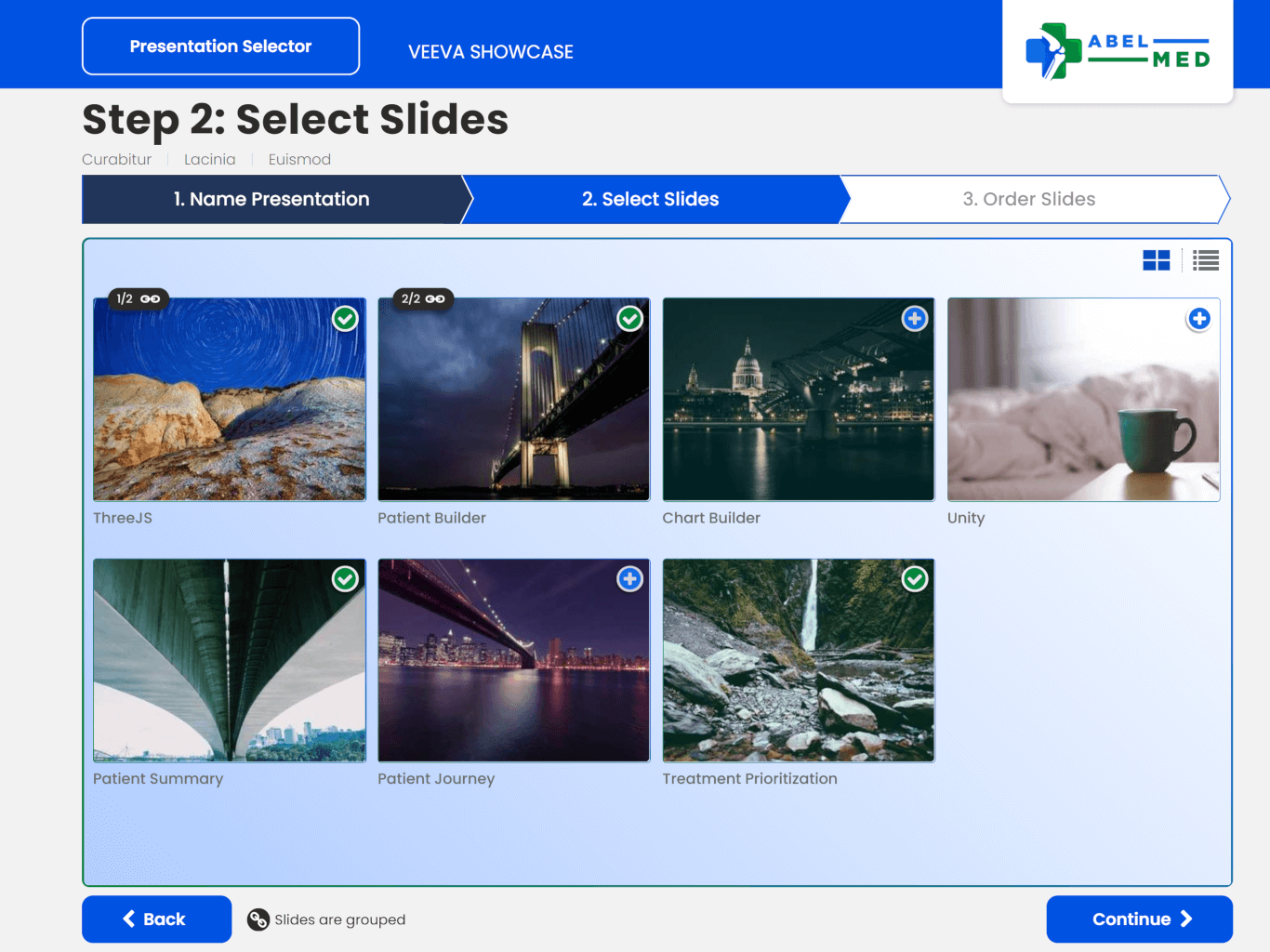
Before: Legacy @import system
Used deprecated @import statements and function-based color system that will be removed in Dart Sass 3.0.0
Legacy SCSS structure
src/
├──sass/
│ │
│ ├───_vars.scss
│ │ // @import project and defaults
│ ├───_defaults.scss
│ │ // @import mixins
│ └───_builder.scss
│ // @import vars and project
└──slides/
│
├──shared/css/
│ │
│ └──global.scss
│ // @import vars and fonts
│
├──Z05/css/
│ │
│ └───slide.scss
│
└──Z10/css/
│
└───slide.scssAfter: Modern @use / @forward architecture
Migrated to modular SCSS with enhanced variable system and future-proof namespace management
New modular structure
src/
├──sass/
│ │
│ ├───_vars.scss
│ │ // @forward defaults and project
│ ├───_defaults.scss
│ │ // @use mixins with defaults
│ ├───_mixins.scss
│ │ // flexible font-family mixin
│ └───_builder.scss
│ // @use vars with namespacing
├──slides/
│ │
│ ├──shared/css/
│ │ │
│ │ └───global.scss
│ │ // @use vars and fonts
│ │
│ ├──Z05/css/
│ │ │
│ │ └───slide.scss
│ │
│ └──Z10/css/
│ │
│ └───slide.scss
│
└──_sourceDeck/styles/
│
└── project.scss
// @use mixins, brand overridesLegacy: src/sass/_defaults.scss
// Brittle, static styles
body {
font-family: Poppins;
}
element {
background-color: #0049bf;
};New: _sourceDeck/styles/project.scss
@use './_mixins' as mixins;
$fontFamily: Poppins !default;
// Direct variable system with !default
$brandColor1: #2B5F51 !default;
$brandColor2: #0BBAB4 !default;
$primaryColor: $brandColor1 !default;The new system uses centralized defaults with !default flags, allowing clean overrides in user project files without breaking the cascade.
_sourceDeck/styles/project.scss
@use '../../src/sass/mixins' as mixins;
@debug 'Loaded: _sourceDeck/styles/project.scss';
$projectFont: Poppins;
$defaultFont: Poppins;
// Brand-specific overrides
$brandColor1: #0053e2;
$brandColor2: #001E60;
$primaryColor: $brandColor1;Migration Benefits
The @use rule migration provides namespace isolation, better dependency management, and Dart Sass 3.0.0 compatibility. Variables are now directly accessible rather than function-wrapped, improving performance and maintainability.
Builder walkthrough
Upon creating a new custom presentation, the user creates a unique title from a selection of strings(this list is custom to each project, injected from _sourceDeck/). The combination is compared against saved projects, and duplicates prompt an option to change the title, or add iteration.
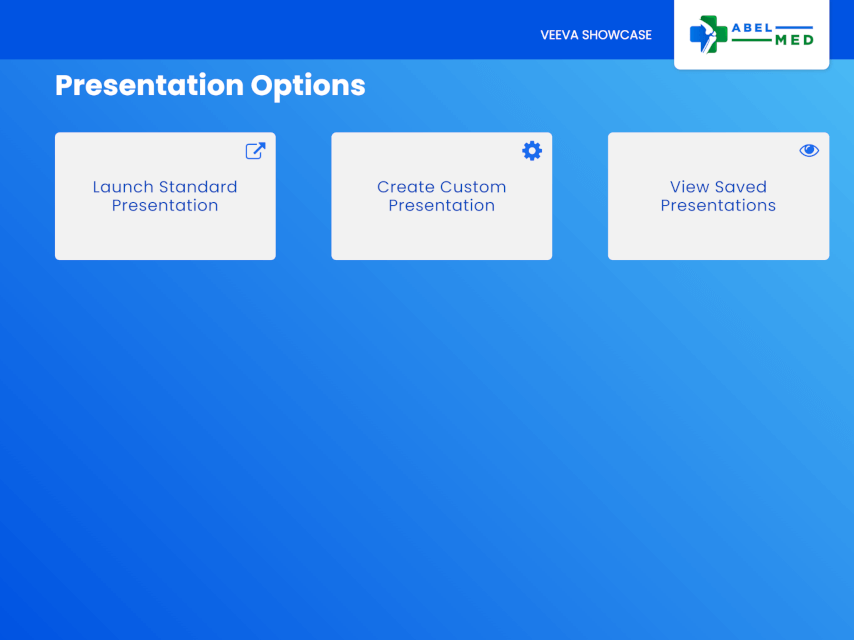
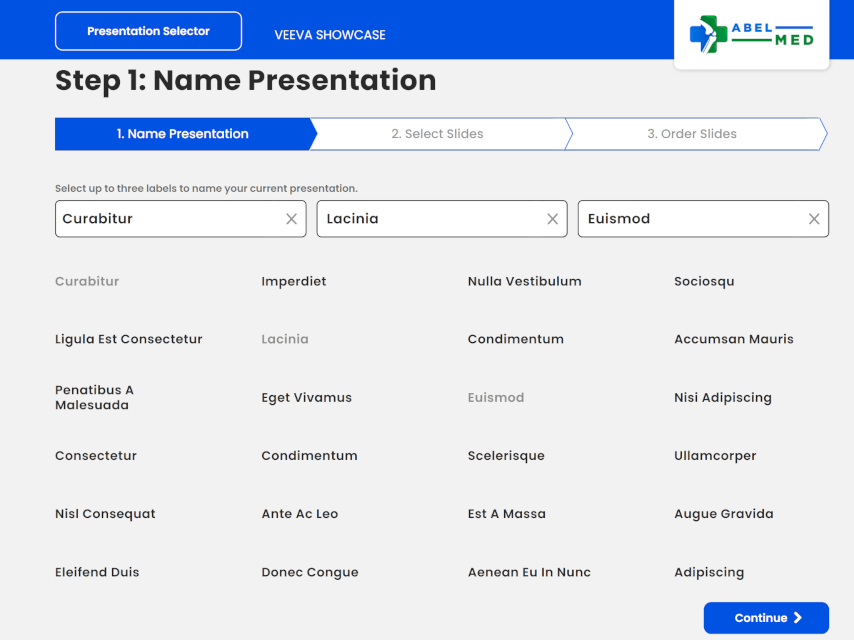
Desired slides are selected, and then the user can reorder them within the presentation - grouped slides (indicated with a lock icon) are fixed in relative position and sequence. This behavior is leverages Sortable.js, combined with custom JavaScript functions and SCSS, in order to meet specific direction from creative and UX stakeholders.

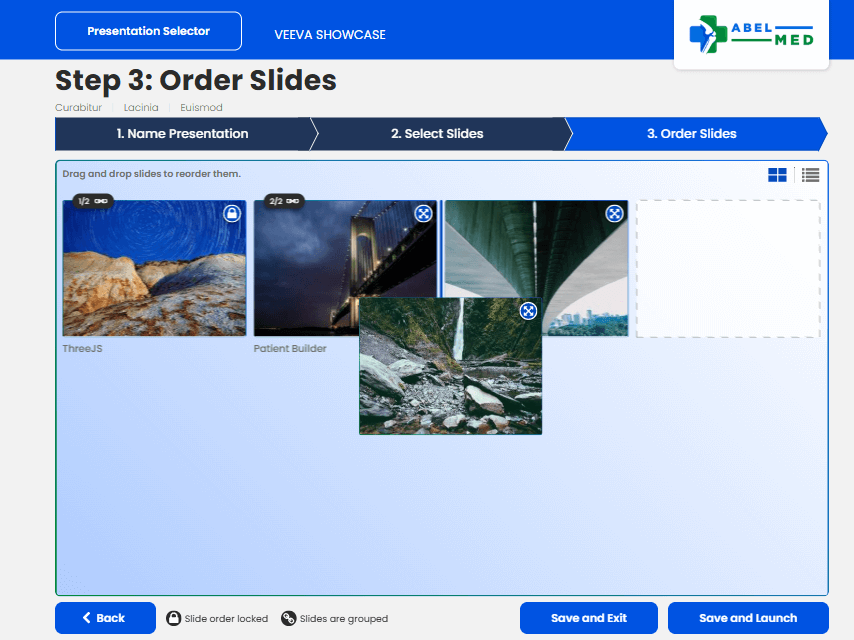
Saved presentations are mapped to local storage. This allows for innumerable options without the need to for extensive save space - the default presentation slides are referenced via the local storage map, so most custom presentation data remains under 2kB.
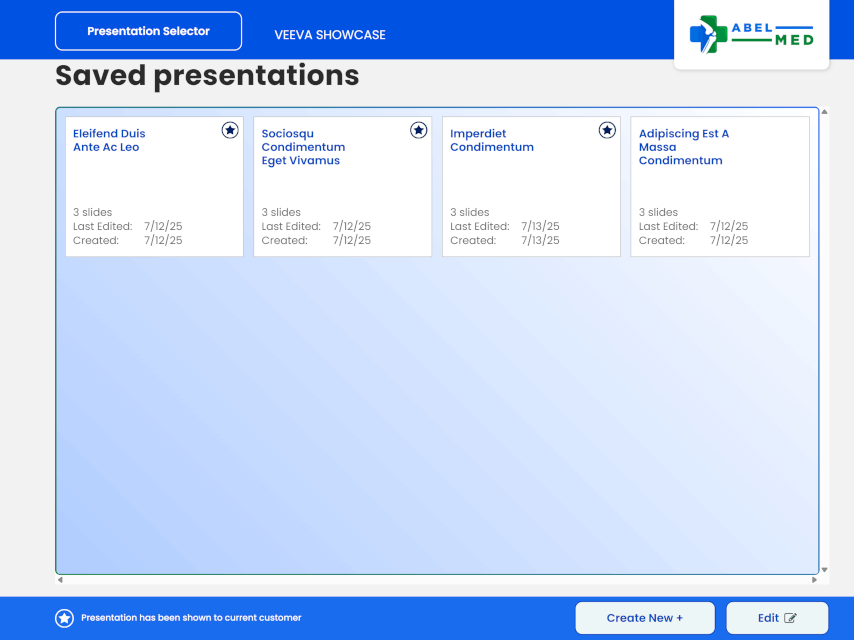
The presentation builder can be toggled between grid and list during the process, and project-specific style overrides and content are inherited for swift replication for multiple clients and brands.
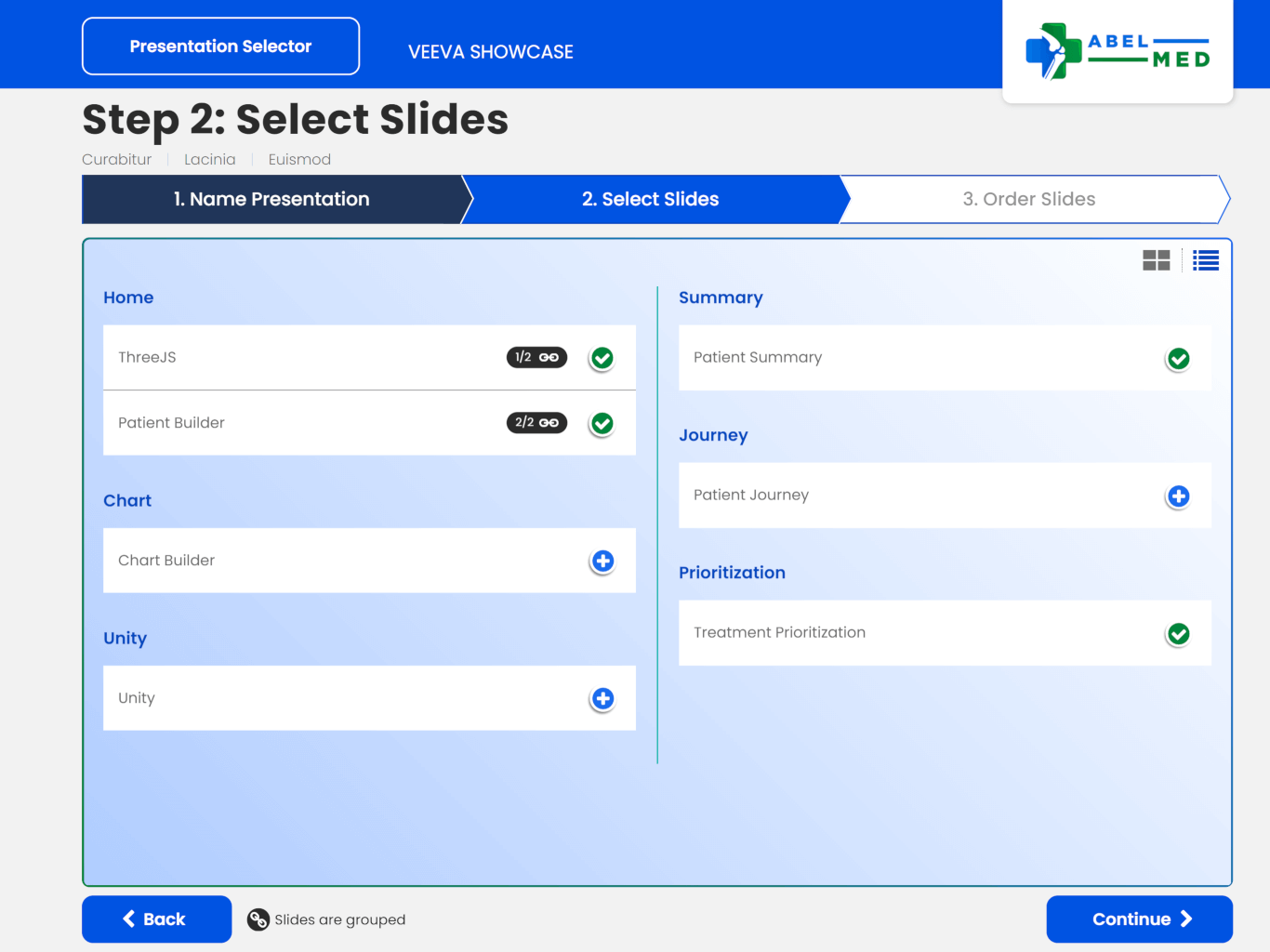
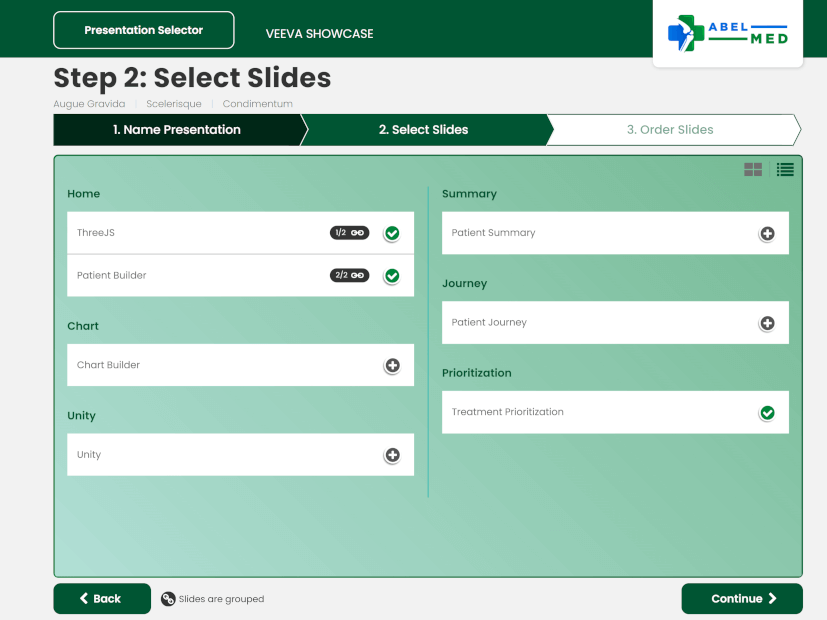
Conclusion
This started off as an brittle one-off application. It took a lot of painstaking work to refactor this project to accept imported source content and styles, use modular SCSS, and adhere to specific creative and UX direction - all while remaining flexible enough to quickly adapt to custom styling for various clients and campains.